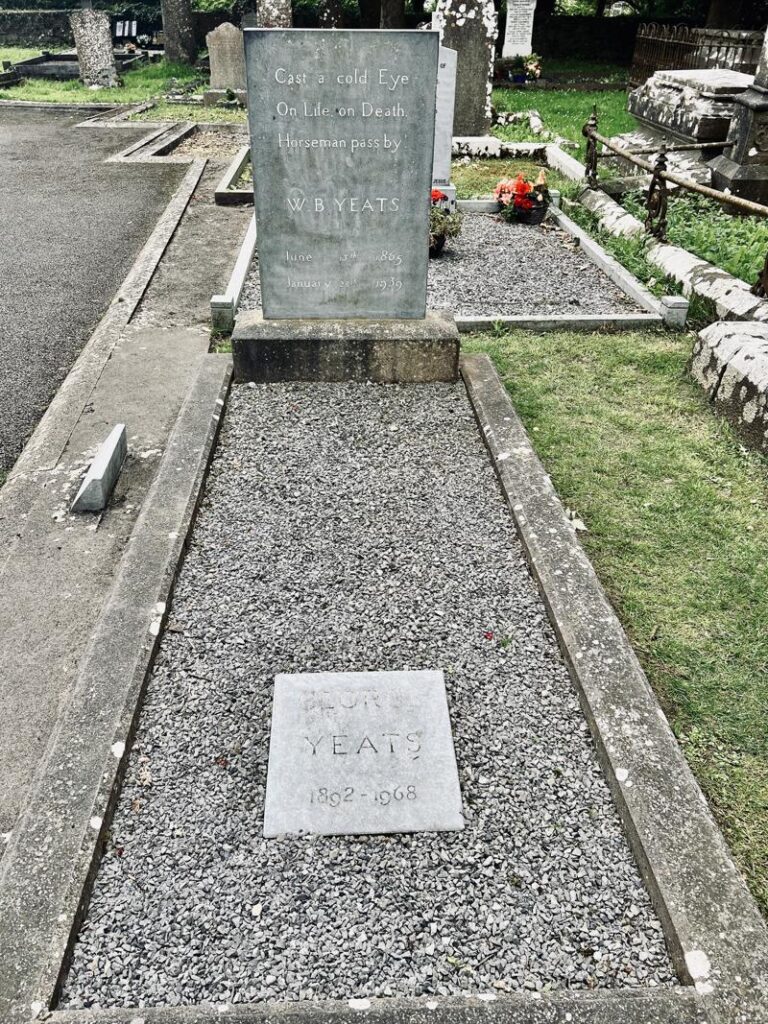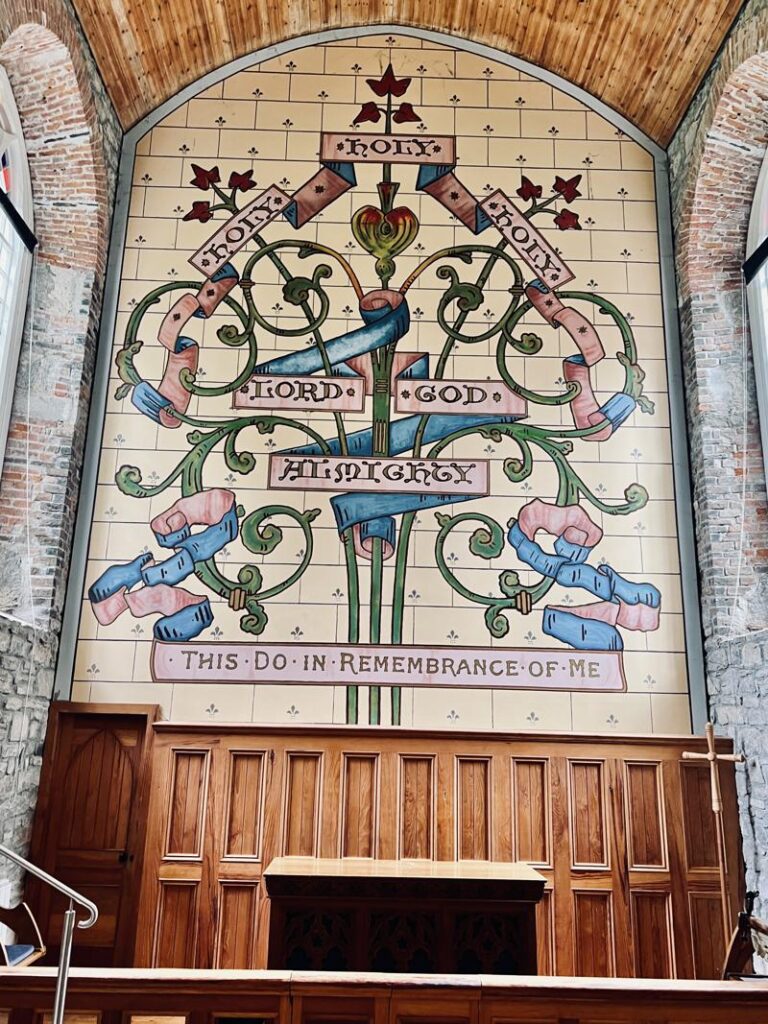The Final Resting Place of WB Yeats: A Must-Visit in County Sligo, Ireland
Written By: Gail Clifford | Published By: Weekend Notes | August 4, 2024

WB Yeats Grave
When plans to climb Ben Bulben are thwarted by inadequate footwear, and you find yourself with 4.5 hours to explore the surrounding area, after the initial disappointment, embrace the opportunity to delve into the rich history and natural beauty nearby. One particularly poignant destination caught our interest: the grave of Ireland’s greatest poet, William Butler Yeats.
A Poet’s Journey
William Butler Yeats, a Nobel Prize-winning poet, passed away at the outset of World War II in 1939. Due to the tumultuous times, he was initially buried in Roquebrune-Cap-Martin, France. It wasn’t until 1948 that his remains were exhumed and transported back to Ireland, fulfilling his wish to be laid to rest at the base of Ben Bulben, a place he held dear.

Church of Ireland at Drumcliff
The Church of Ireland at Drumcliff
Our visit began at the Church of Ireland in Drumcliff, where Yeats’ great-grandfather once served as rector. This quaint church, nestled in the shadow of Ben Bulben, offers a serene and reflective atmosphere, perfect for contemplating the life and works of the poet.
As we approached the church, a friendly sign at the front door directed us to both the church entry and Yeats’ grave. For a small fee, visitors can access a recorded tour of the church, providing a deeper understanding of its history and significance. We opted to visit the grave first, turning to the 9 o’clock position when facing the front door of the church.
A Poet’s Final Resting Place
Yeats’ grave is marked by a simple headstone, inscribed with his famously enigmatic epitaph:
Cast a cold Eye
On Life, on Death.
Horseman, pass by!
Standing at his grave, with the majestic Ben Bulben towering in the background, we felt a profound connection to the landscape that inspired much of his poetry. The peaceful surroundings, combined with the knowledge of Yeats’ enduring legacy, made this a deeply moving experience.
His wife, “George,” Georgiana Hyde-Lees, died in 1968.

Church of Ireland at Drumcliff interior
Exploring the Church and Grounds
After paying our respects at Yeats’ grave, we entered the church where you can take the recorded tour (purchase at the hut outside the front doors to the right). The interior of the Church of Ireland at Drumcliff is modest yet charming, with stained glass windows casting colorful light onto the wooden pews. The tour provided fascinating insights into the church’s history and its connection to the Yeats family.
Staff at the information booth are well-versed in its history. Constructed between 1808 and 1812, this church was Church of England until it converted to Church of Ireland but the site has been religious since the 600s. Not initially “Catholic” since it was ruled, even after the time of St. Patrick, by the collection of views rather than the Roman influence, it’s interesting to hear its development as a faith community and more obvious while statues and the crucifix are not central to its altar decorations.
The grounds of the church are equally captivating. Ancient gravestones, some dating back centuries, dot the landscape, telling silent stories of those who came before. A large Celtic cross, believed to be over 1,000 years old, stands sentinel near the entrance, adding to the sense of historical continuity.
Gail Clifford
Latest posts by Gail Clifford (see all)
- We Were Warned: An Anthology of Short Stories - October 23, 2024
- Exploring Dublin’s Royal Canal: A Journey Through Time and Nature - September 30, 2024
- The 8 Best Dr. Phillips Restaurants | Dr. Phillips, West Orlando, Florida - September 19, 2024
- Discover Cascais, Portugal - September 18, 2024
- The Ultimate Expat Guide How to Buy Property in Costa Rica, Ireland and the USA With Less Stress - September 17, 2024

0 Comments